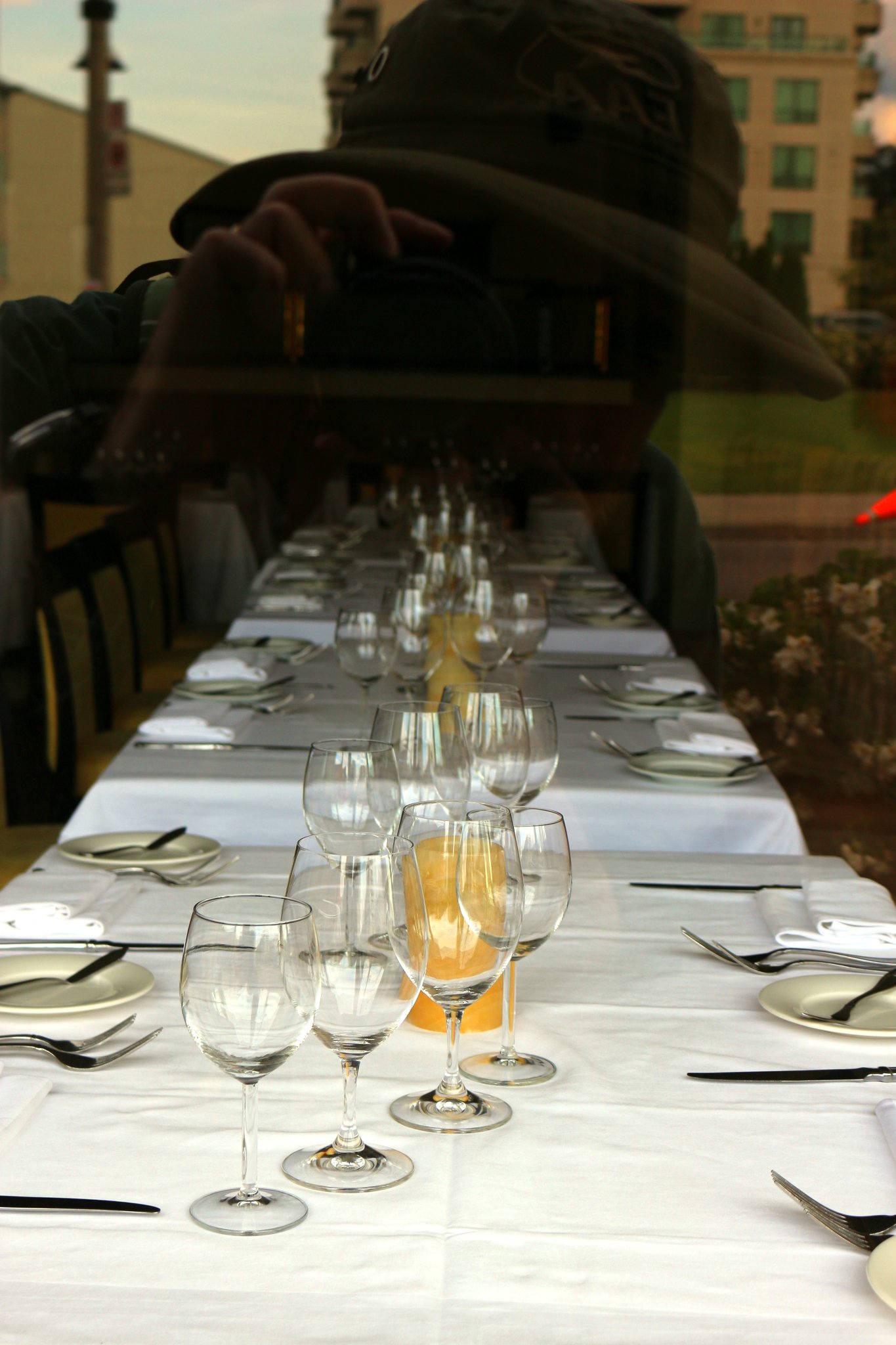Here are a few political heavyweights from that fine recent exhibition of American press images of Canada, shown at the Ryerson image centre.
Looking at a whole bunch of Canadian prime ministers from the cold-war era, all grouped together on one wall, I was struck by how complex and contradictory their stories really are. Politics being such a game of passion (now, more than ever), we have special tendency to over-love and over-hate figures in power, and often falsely edit our stories of them to bolster that ‘spirit’.
But as a writer with a philosophical bent, I most like their human strangeness, their contradictions and the sometimes creative, sometimes extreme responses they devised, to the challenging circumstances they encountered.
Still holding forth (top photo)
We Canadians don’t often remember Diefenbaker fondly, and it seems perhaps unfairly characteristic of his limited charisma that he appears stiff, even here, around a remote logger’s campfire.
I’ll deal with the destruction of the early Canadian Aerospace industry (popularly symbolized by the Arrow) elsewhere (it wants a piece unto itself) – but it’s worth noting that he was keenly concerned with civil liberties and passed an important bill of rights. He was also the first Prime Minister to extend the franchise to the natives (horribly and shamefully late in the day, like so much on that file).

He brought women into the cabinet and many ethnicities which were formerly excluded – he was also the first Prime Minister to place special emphasis on our northernness as being key to our identity, and not just our long east-west belt of greatest density and wealth.
He promoted a new sort of national vision that really did shift the gaze north, very helpfully (ask a Yellowknifer). The cold war also made northern military operations especially important.
Dief also famously built a lovely (extravagant super-villian-ish) nuclear bunker, but though this point is remembered wrongly by many, he firmly refused to allow nuclear weapons to be based on Canadian soil, which ultimately cost him big-time with the hawks – though many in opposing parties and factions were, even then, completely opposed to nukes and war both, on principle.

Lester (Mike) Pearson is a great example of far-sighted creative politics. This is the face of a Canadian Hero.
He will be forever remembered for his early work as secretary of state for external affairs (under PM Louis St. Laurent). In this role, he won the nobel Peace prize for his brilliant response to the unbelievably dangerous Suez crisis – devising (along with the extraordinary UN secretary general Dag Hammarskjold) “peacekeeping” forces and duties.
A way to reliably fill a power-vacuum left between retreating armies, that both sides of a divided population could trust (or indeed, sometimes mistrust) equally. (also allowing both combatants to save face – which can itself, be crucial).

There is no question this has definitely gone wrong more than once – and also no question that it has saved a great many lives in countries around the world.
There is a sacred part of the old warrior-code which is all about being the one willing to stand between civilians and trouble, and face their danger for them – particularly for an all-volunteer armed forces.
This gave the Canadian forces a role with serious sacrifice and honour without being drawn into participating in provocations and invasions. A way to honour our closest ally and be materially useful, even when we fundamentally disagreed on aims. A truly brilliant trick of equipoise, under extremely tense cold war conditions.

What a Joke (Pearson with Kruschev and Bulganin)
But in a later time, as Prime minister, he was the one who stationed Canadian Bomarc missiles with American nuclear warheads on Canadian soil – designed for “area effect” – the plan was literally that we would voluntarily nuke our own northern Canadian territory to stop Soviet missiles heading toward US targets.
We owe the oft-forgotten John Turner, who was once thought to be our upcoming Kennedy, (ruinously eclipsed by Trudeau-mania) for getting rid of them, in his brief Prime ministerial stint in the eighties.
Yes, I truly hate nukes – but then we also have to remember, Mike didn’t just create peacekeeping as a young minister – when he was Prime Minister, his government also effectively outlawed capital punishment, and passed: Universal healthcare, forty-hour work week, two weeks minimum vacation, new minimum wage, Canada pension plan, Canada student loans, made French an official language, and instituted the very first race-neutral immigration policy in the world (those last two very-often credited to Trudeau).
Plus, he also not only kept Canada out of Vietnam, but backed peace talks in ’65 – which greatly infuriated Johnson. Sound advice from a friend, rejected.

Which is not to say that Nixon and Trudeau got along any better – to be sure, (if smiles could kill) – and oh my, did things ever get weird, right about then…
(Part two in a couple of weeks, stay tuned)
¯\_(ツ)_/¯










[…] but his political genius remains unprecedented in the modern history of our country. After the war, as minister of foreign affairs, Lester Pearson invented Peacekeeping as a mission for the Canadian military, so that we could refuse involvement […]
[…] Wages rose by two-thirds, during this same period – and post-war, Canada was firmly established as a middle-power on the world stage, with fantastic industrial promise, fast rising standards for it’s people, and a key role in establishing the United Nations (see this piece on Lester Pearson). […]